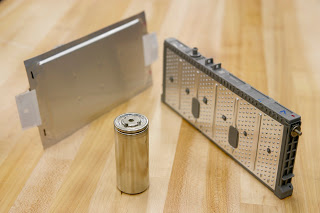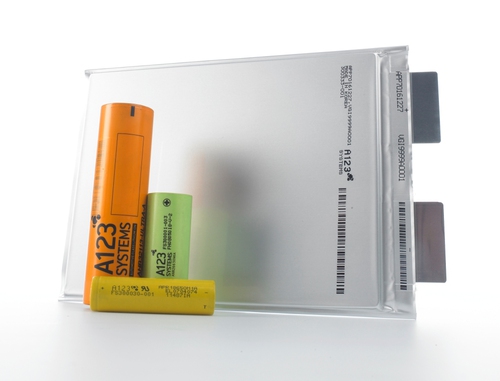Most “technology” developments are enjoying a rapid pace of development, and in computer technology there is a truism known as Moore’s Law that claims CPU’s will double in complexity/capability/speed every 18 months. It’s Moore’s Law that explains why our cell phones have more computing power than the supercomputers of the 1970’s. However some technologies don’t have the same sort of rapid progress which might disappoint those who think technology is a magical thing that will be radically different every couple years. This is true for some technologies and not others. One area of technology that has a slow rate of progress is batteries.
The Proceedings of the National Academies of Sciences published an essay by Fred Schlachter that tries to claim there is no Moores Law for batteries, and he seems to be suggesting that we should resign ourselves to not having a quick fix for the energy density boost needed to spur electric car adoption.
That is – the issues with the current crop of electric cars – what they call range anxiety and the high cost – this is rooted in energy density. When battery chemistries are developed with a higher energy density, it will enable lower cost battery packs that could drive a car for more distance. Today the electric cars that can go a long distance are expensive because of the current battery pack cost, while the more affordable electric cars have a more modest range.
In March, Lux Research published a study claiming that broader all-electric vehicle adoption will require another breakthrough in energy density![]() . The reasoning is what I just said about the current crop of electric cars aren’t quite satisfying because the energy density isn’t sufficient. They also claimed that the automakers are more conservative about what they’ll adopt and may be the last manufacturers to adopt the next wave of advanced batteries.
. The reasoning is what I just said about the current crop of electric cars aren’t quite satisfying because the energy density isn’t sufficient. They also claimed that the automakers are more conservative about what they’ll adopt and may be the last manufacturers to adopt the next wave of advanced batteries.
I disagree with Schlachter’s claim that there’s no “Moore’s Law For Batteries” because he’s not stating his case very well. Moore’s Law as written for computer systems specifies a rapid rate of progress. However the model of Moore’s Law is that progressive improvements to technology cause a doubling of capability over a given amount of time. There are improvements being made to battery technology, and there is a rate of doubling of capability which one could calculate. Hence someone could calculate that rate and declare it for the world and become famous as the originator of that law.
However the problem isn’t that there’s no “moore’s law” (periodic doubling of capability) but that the time to double the capability of battery packs is much longer than 18 months. If some scientist were to calculate the doubling time, its period would be perhaps 10 years or more.
Further, there are fundamental theoretical limits to the capability of a particular battery chemistry, meaning that even as battery companies iteratively improve their cells every year they can only go so far to improve a particular chemistry.
What does happen in batteries every so often is a quantum jump in capability. Such a jump is not an iterative improvement that sees a percentage increase every year, but a radically different approach that see’s a massive jump at once.
GM’s CEO Dan Akerson and other top people at GM have been discussing developing, in a few years, an electric car with a much longer range, on the order of 150-200 miles![]() . Enough has been said that I believe something is afoot. GM has a significant battery research laboratory in China
. Enough has been said that I believe something is afoot. GM has a significant battery research laboratory in China![]() , and are reportedly working with Envia Systems who is designing lithium-ion technology improvements
, and are reportedly working with Envia Systems who is designing lithium-ion technology improvements![]() .
.
I fully believe that improved battery technology is a matter of “when” rather than “if”. But as I wrote a couple weeks ago, that the expectation of a future perfect electric car could delay todays purchasers of good electric cars. (The “perfect” is the enemy of the “good”)
Source: http://www.pnas.org/content/110/14/5273.full![]()
- Highway design could decrease death and injury risk, if “we” chose smarter designs - March 28, 2015
- GM really did trademark “range anxiety”, only later to abandon that mark - March 25, 2015
- US Government releases new regulations on hydraulic fracturing, that some call “toothless” - March 20, 2015
- Tesla Motors magic pill to solve range anxiety doesn’t quite instill range confidence - March 19, 2015
- Update on Galena IL oil train – 21 cars involved, which were the supposedly safer CP1232 design - March 7, 2015
- Another oil bomb train – why are they shipping crude oil by train? – Symptoms of fossil fuel addiction - March 6, 2015
- Chevron relinquishes fracking in Romania, as part of broader pull-out from Eastern European fracking operations - February 22, 2015
- Answer anti- electric car articles with truth and pride – truth outshines all distortions - February 19, 2015
- Apple taking big risk on developing a car? Please, Apple, don’t go there! - February 16, 2015
- Toyota, Nissan, Honda working on Japanese fuel cell infrastructure for Japanese government - February 12, 2015















